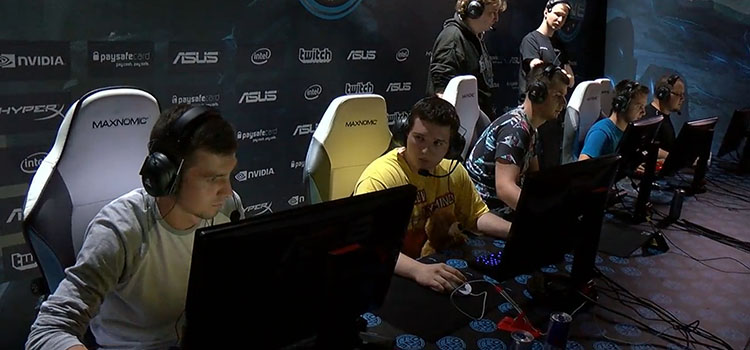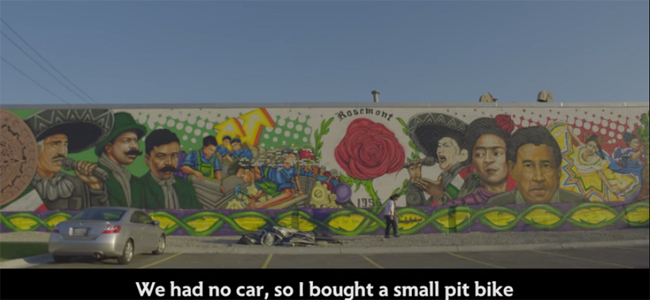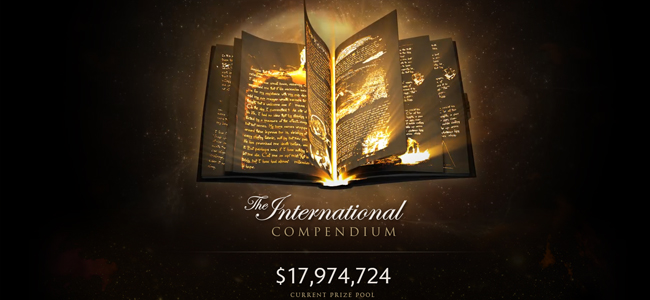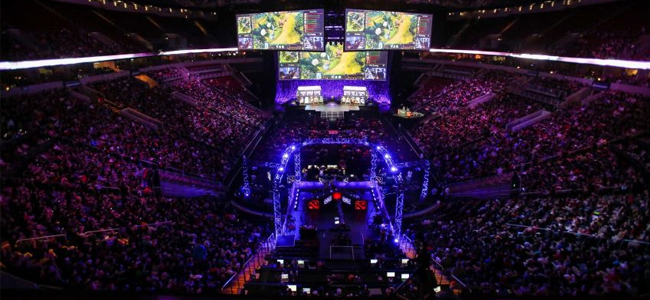
Photo taken by Dota 2 Valve Software (via Instagram)
Comparing a CS:GO major to Dota 2’s annual International event is like comparing football to golf. Not only will you have people shouting at each other at how boring or dumb the other is, but additionally, fans of both often miss that the intended atmosphere and audience of each are much different. Nevertheless, there are surface elements of Dota's signature event that Valve and its partners could apply to CS:GO majors, making for a bigger spectacle and healthier competitive scene.
While Dota 2's teams can depend on The International's prize pool to keep them afloat throughout the year and it gives teams incentive to improve, CS:GO's majors lack the prestige, outside appeal and rewards which makes for an unhealthy pro scene that sees organizations struggle to keep their rosters intact, leaving some players tempted to invest in more lucractive streaming and analysis desk side-gigs. Not to mention, CS:GO's top talent get burnt out since they have to constantly compete and win at events year-round to earn an annual prize salary that even pales in comparison to The International's 8th place team. While Team Secret can take a month off, EnvyUS feel pressured to compete in four back-to-back events that leaves the team exhausted and broken. Even worse, the winners of the CS:GO majors are rarely recognized outside the fan-base, unlike Dota's champions that grace car commercials and the like.
Though the viewer account has continued to increase at majors over the seasons, it's still a poor refelection on the enormous success surrounding the game. So while I introduce this article by saying I’m running a fool’s errand, there are elements of Valve’s enormously successful event that would benefit players and viewers if adopted for the majors, such as the upcoming ESL Cologne.

Wildcard Qualifier
Since Dota has only one Valve organized major -- in contrast to CS:GO’s three -- it needs to be absolutely clear that the teams at the event deserve their spot in groups and nothing makes this more certain than a wildcard qualifier.
For those unfamiliar, The International’s Wildcard Qualifier is an offline LAN that pits the four teams that placed 2nd in their respective regions against each other for the two last spots at The International. While NA Dota fans may be sad there is one less US favorite at the event this year, they can at least witness it’s because the team couldn’t compete against the talent in other regions.
If you follow CS:GO’s communities, not a single qualifier goes by without some small pocket of fans complaining that region “X” doesn’t deserve to have two teams at the upcoming major or that Europe shouldn’t have four teams qualifying. Though I wouldn’t argue against favoring a 2nd tier EU team winning against a 2nd tier NA team (Asian teams even more so), I don’t feel it’s fair to not give them a chance. If relative unknowns Team eBettle can dominate in the EU qualifier and Flipsid3 can make it with a new roster, why count out teams like Malaysia's MVP Karnal or NA's Team Liquid?
Since Asian presence is far less in CS, it may make more sense to decrease its EU qualifier slots to 3, keep NA and Asia at 2, and leave the final slot open for a wildcard qualifier. Or, if you really believe in upsets, make EU equal to the rest and offer two wildcard qualifier slots. CS having only three qualifiers instead of four in Dota (Asia is split between China and Southeast Asia due to its popularity in the East) complicates things, but the point stands: A wildcard qualifier provides more opportunities for new talent to rise, more clarity on who deserves placement at a major, and of course, more entertaining matches to watch!

Player Videos
Though I consider CS:GO my favorite game to play and follow competitively, I have a dirty secret to confess: Dota 2 was my first love. Stumbling onto The International 2013 sparked an obsession in me for the game and event, which as someone who never followed or cared about sports ("e" or otherwise), that was completely new to me. By 2014’s event, my passion for the event grew to the point where I wanted more and then CS came back into my life with ESL Cologne advertised on Steam.
I can’t speak for everyone but what started my investment in eSports and Dota with The International was its presentation of its players at the event. While analysts introduced players according to their ability and playstyle, the event also offered interviews and videos (shot before the event) that gave insight into players' personalities, aspirations and personal histories. While I may not have been able to appreciate all the nuances that made Dendi such a fierce mid-player, the video showing his lovable, goofy nature that bleeds into his playstyle made him an immediately identifiable and likable player. I had someone I understood, someone to cheer for, and a reason to follow matches. That first step is always the hardest when gathering the uninitiated.
This year’s International is even better, as it offers well-produced player videos for all teams and interviews with even wildcard teams before the main event. When you hear about a Pakistani player’s impoverished upbringing that required him to sell his bike to play the game he now competes in or a Chinese player tearing up as he talks about fighting for his grandmother’s pride, it makes it a lot easier to invest in teams and makes matches much more emotional as you feel conflicted on who to cheer.
Despite occupying less spotlight at events, CS players are every bit as interesting and likable as Dota's best. It’s sad then that this only becomes apparent to those who read the interviews, follow streams, and interact with players on Twitter. Maybe CS players aren’t as open to talking on camera or maybe their sponsors worry over what will happen if they do. But for a look at the alternative, just examine Fnatic’s sudden rise of popularity within the CS community.
Fnatic has long been a dominating force feared and respected in the pro scene, but the unmerited cheating allegations, infamous Dremhack Winter boost, and an embarrassing promotional video made them a team prone to endless hate within the fan community. Yet when Fnatic put out its excellent spotlight series on its CS:GO team, it seemed almost overnight that fans warmed up to the players and saw them on a personal level.
Players are all human. They have personality quirks, hardships and ambitions that all make them unique within the pro scene, but we rarely see these things on display at CS events. Yet, these are the things that make people watch sports films without even caring about sports or, as was the case with me, serve as a gateway for a passion toward a competitive scene. As much as the onus is on eSports journalists to present what it means to Skadoodle to be in the spotlight after a year on the sidelines or Virtus Pro’s key players' struggles to maintain their team while caring for their families, it would be great to see Valve embrace these stories by putting them into videos as they have done at The International.

Community prize pool
The $18 million dollar prize pool at this year’s International could fund the next 24 years of CS:GO majors, assuming it remains at 3 majors a year with $250,000 prize pools each. That’s a difficult pill to swallow for CS fans and the pro scene.
With a comparably weak prize pool that hasn’t changed since Fall 2013, outsiders would be forgiven for thinking CS:GO isn’t popular or doesn’t bring in money. Yet, a look at Steam’s database shows the game doesn’t lag far behind Dota in player count and the game is a cash cow earning some streamers, pro players, sponsors, betting sites, and skin traders annual six-figure income. In fact, it seems the money is going everywhere except the tournaments.
It’s tempting to be angry at Valve for not offering a Compendium equivalent for CS:GO majors. For you non-Dota players, it’s basically a program guide to an event that you pay $10 for and gain exclusive content by leveling via games or paying extra. When you see that enormous prize pool, it’s quite a surprise to initially learn Valve contributed only $1.6 million to it. But that isn’t completely true, is it?
Valve made a decision to let 25% of Compendium purchases go to the prize pool, which in a roundabout way is Valve directly feeding the prize pool since it'd be receiving all funds otherwise. So, CS:GO doesn’t need a Compendium, it just needs Valve to give back to the pro scene. Valve has never put out numbers on the revenue it receives from skins, but one Reddit user did the math on skins sold over a 180-day period in 2014 and calculated it around $11 million USD. If Valve put the 15% it receives on CS:GO market transactions or even 25% on all CS:GO in-game items sold for three months, the next major’s prize pool wouldn’t be far from that of The International. Keep in mind, we aren’t even factoring in people buying multiple accounts and other ways Valve receives money from the game.
If you want to get really creative, imagine if Valve put all the skins jackpot sites out of business by offering its own in-game jackpot that puts lost skins toward the pro scene. $100+ million dollar CS:GO majors here we come, baby!

Photo by Joshua Bessex (via Seattlepi)
Week long event
Let’s believe for a moment that CS:GO pro players don’t care about money and only care about the integrity of the game. A bigger prize pool also means better production values and scheduling, which means we’d finally get an epic week long CS major on par with The International (okay, that’s two weeks but we’ll take what we can get.)
It's disappointing to see great teams go out in best-of-ones in group stage, a tight schedule that doesn’t allow for player and analyst breaks, and an anti-climatic best-of-three final. Sure, three is good but five is better! With more flexibility, a major could even be spread across two weekends instead of one week which would give teams plenty of time to recover from groups, ensuring everyone is able to play at peak level while giving tournaments more of a unique atmosphere as there is time for the community to embrace the city and the city to embrace it back, like The International’s relationship with Seattle.
Regardless of how the event is scheduled and spread, both spectators and players would benefit from bigger and better majors. It seems those twowords can be applied to everything surrounding CS:GO over the past year, except the majors themselves.
More content on GosuGamers:





